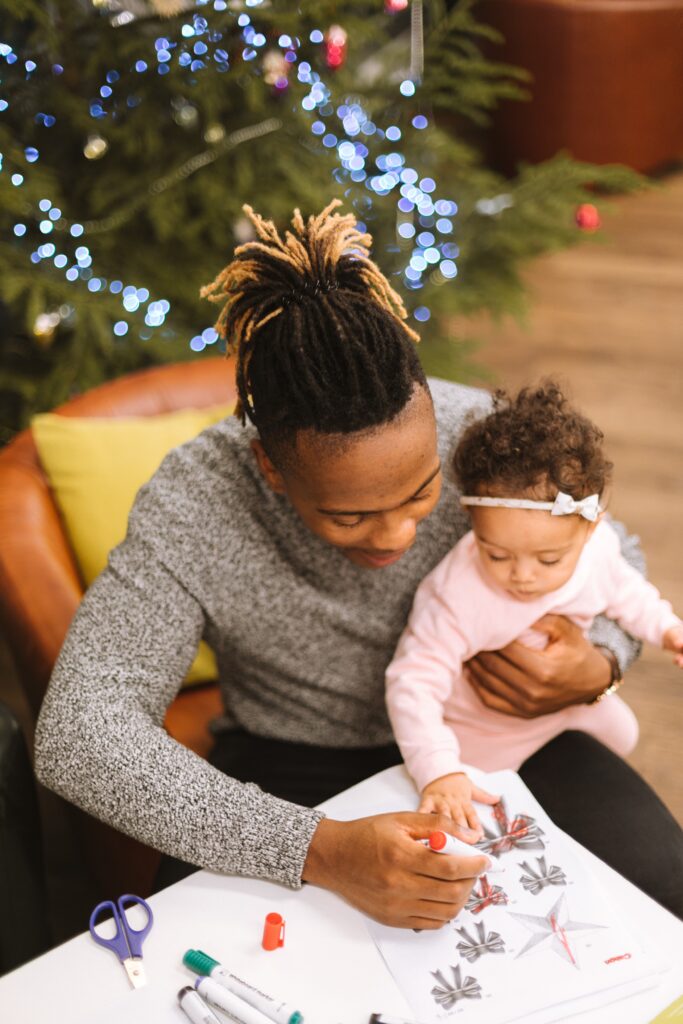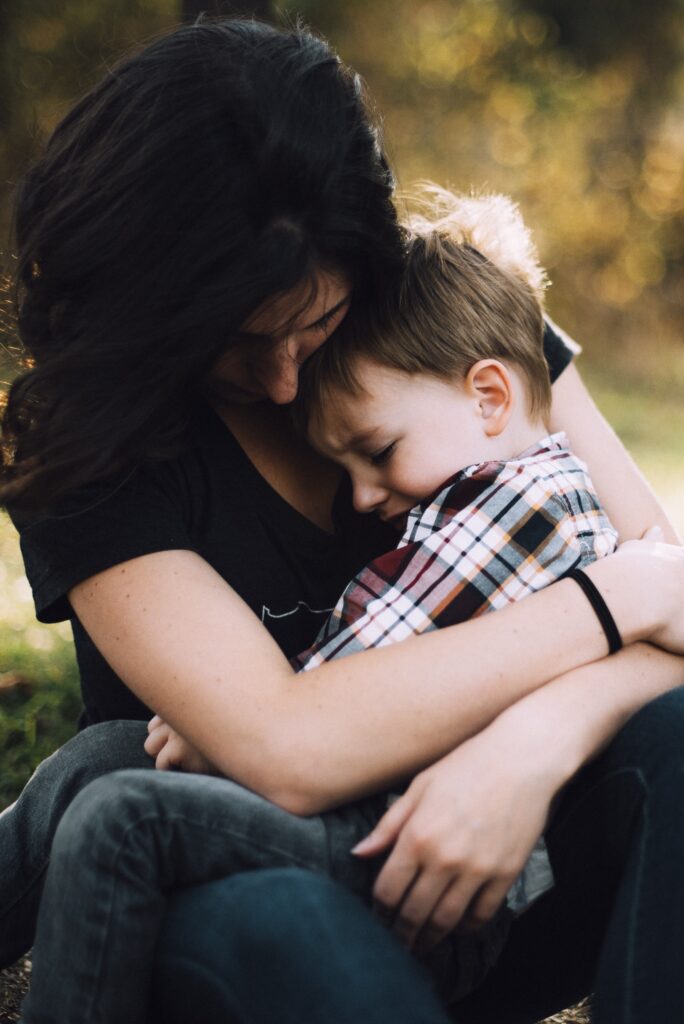Positive Discipline Techniques: Effective Ways To Guide Behavior And Encourage Cooperation
In this article, you will discover a range of effective techniques that can be used to guide behavior and encourage cooperation through positive discipline. We will explore methods that focus on nurturing a positive environment and building strong connections with children, fostering their social and emotional growth. By implementing these techniques, you can create a harmonious and respectful relationship with your child while helping them develop self-discipline and responsibility.

Understanding Positive Discipline
Definition of positive discipline
Positive discipline refers to a parenting approach that focuses on teaching children valuable life skills, promoting their self-esteem, and encouraging positive behaviors. It is based on mutual respect, empathy, and open communication between parents and children. Unlike traditional discipline methods that often rely on punitive measures and strict rules, positive discipline aims at guiding children’s behavior through understanding and supportive techniques.
Benefits of positive discipline
Positive discipline has numerous benefits for both children and parents. By establishing a nurturing and respectful relationship, it fosters a sense of trust between parents and children. This approach helps children develop self-discipline, self-control, and problem-solving skills, which are crucial for their emotional and social development. Positive discipline also encourages cooperation and reduces power struggles, creating a harmonious environment at home.
Key principles of positive discipline
Positive discipline is built upon several key principles that contribute to its effectiveness. Firstly, mutual respect is vital, emphasizing that both parents and children deserve to be treated with dignity. Secondly, open communication is encouraged, allowing children to express their feelings and thoughts without fear of judgment. Consistency and fairness in enforcing rules and expectations are also important, as they provide a stable and predictable environment for children. Lastly, positive discipline promotes teaching over punishment, focusing on guiding children towards desired behavior rather than simply punishing undesirable behavior.
Building a Positive Relationship with Your Child
Create a loving and nurturing environment
To build a positive relationship with your child, it is essential to create a loving and nurturing environment at home. This can be achieved by showing unconditional love and affection, offering emotional support, and providing a safe space for your child to express themselves freely. By investing time and energy into building a strong emotional connection, you lay the foundation for a healthy parent-child relationship.
Communicate effectively with your child
Effective communication is another vital aspect of building a positive relationship with your child. It involves active listening, being fully present, and showing genuine interest when your child speaks. By listening without judgment and validating their feelings and emotions, you create an atmosphere of trust and understanding. It is also crucial to use age-appropriate language and explanations to ensure clear communication.
Spend quality time together
Spending quality time together is key to fostering a positive relationship with your child. Engage in activities that your child enjoys and show genuine interest in their hobbies and interests. This allows you to connect on a deeper level and creates opportunities for open communication. Quality time together helps strengthen the bond between you and your child and provides a platform for teaching important life skills.
Setting Clear Expectations
Establishing rules and boundaries
Setting clear rules and boundaries is essential for teaching your child appropriate behavior. By clearly defining what is expected of them, children know the limits and understand the consequences of their actions. Rules should be age-appropriate, consistently enforced, and explained in a positive manner. It is important to involve your child in the rule-making process to promote a sense of ownership and responsibility.
Explaining consequences and rewards
Alongside establishing rules, it is crucial to explain the consequences and rewards associated with their behavior. Make sure the consequences are logical and related to their actions, emphasizing the cause-and-effect relationship. Similarly, rewards should align with positive behavior and be age-appropriate. By explaining these concepts, children learn to make informed decisions and understand the impact of their choices.
Consistency in enforcing expectations
Consistency is key when it comes to enforcing expectations. By following through with consequences and rewards consistently, children understand that their actions have predictable outcomes. This helps in minimizing confusion or feelings of unfairness. Consistency also contributes to creating a stable and secure environment for your child, promoting a sense of safety and trust.
Using Positive Reinforcement
Recognizing and praising good behavior
Recognizing and praising good behavior is a powerful technique in positive discipline. By acknowledging and highlighting positive actions, you reinforce the desired behavior and motivate your child to continue exhibiting it. Offer specific praise, focusing on the effort and improvement rather than solely on the outcome. This boosts your child’s self-esteem and reinforces a positive self-image.
Reward systems and incentives
Implementing reward systems and incentives can be effective in encouraging positive behavior. This can involve a chart or a token system where your child earns rewards for completing tasks or displaying desired behavior. Rewards can be small treats, special privileges, or even additional quality time with you. Such systems provide clear goals for your child to strive towards, creating a sense of achievement and motivation.
Utilizing small gestures of appreciation
Small gestures of appreciation can go a long way in reinforcing positive behavior. This can include verbal expressions of gratitude, handwritten notes, or even simple acts of kindness like hugs or high-fives. These gestures not only show your child that their efforts are valued but also foster a positive and loving atmosphere. By consistently demonstrating appreciation, you strengthen the bond between you and your child.

Redirecting Behavior
Distracting and redirecting attention
When faced with undesirable behavior, distraction can be an effective technique. By redirecting your child’s attention to a more positive activity or topic, you shift their focus away from the behavior you wish to discourage. For example, if your child is throwing a tantrum, you could engage them in a game or suggest a different activity that they enjoy. This strategy helps break the cycle of negative behavior and provides an opportunity to redirect their energy in a positive direction.
Offering alternatives
Instead of simply telling your child what not to do, offer alternatives that are more acceptable. This empowers your child to make choices and gives them a sense of autonomy. For instance, if they want to play with something potentially dangerous, offer a safer alternative. By providing appropriate options, you guide your child to make better choices and learn problem-solving skills.
Teaching problem-solving skills
A key aspect of redirecting behavior is teaching your child problem-solving skills. Encourage them to identify the problem, brainstorm potential solutions, and evaluate the outcomes of each option. This fosters critical thinking and empowers your child to find their own solutions. By teaching problem-solving skills, you equip your child with valuable tools for navigating challenges and making positive choices in the future.
Active Listening and Empathy
Listening without judgement
When engaging in active listening, it is essential to set aside your own judgments or biases. Focus on truly understanding your child’s perspective without interrupting or criticizing. By allowing them to express themselves freely, you create a safe space for open communication. This helps your child feel heard and valued, strengthening your bond and promoting mutual respect.
Validating feelings and emotions
Validating your child’s feelings and emotions is a crucial component of active listening. Acknowledge their emotions without dismissing or belittling them. By doing so, you validate their experiences and help them develop emotional intelligence. Validating feelings also encourages your child to express themselves honestly, fostering a healthy emotional connection.
Encouraging open communication
Encouraging open communication involves creating an environment where your child feels comfortable expressing their thoughts and feelings. This can be achieved by being approachable, non-judgmental, and responsive to their needs. Listen actively, ask open-ended questions, and show genuine interest in their experiences. By nurturing open communication, you build trust and facilitate a deeper connection with your child.

Modeling Appropriate Behavior
Being a positive role model
Children often mirror the behavior they observe in their parents and caregivers. As a parent, being a positive role model is essential in teaching your child appropriate behavior. Demonstrate the values and behaviors you want to instill in them, such as kindness, respect, and empathy. Your consistent actions and reactions serve as a powerful tool for teaching and shaping their behavior.
Demonstrating desired behaviors
In addition to being a role model, actively demonstrate desired behaviors to your child. Show them how to communicate effectively, solve problems peacefully, and handle conflicts maturely. Share your thought process when making decisions, allowing them to understand your reasoning. By modeling these behaviors in your everyday interactions, you provide tangible examples for your child to follow.
Handling conflicts maturely
Conflicts are bound to arise in any relationship, including the parent-child dynamic. When conflicts occur, it is essential to handle them maturely. Use respectful language, active listening, and compromise when necessary. By demonstrating effective conflict resolution, you teach your child valuable skills for managing disagreements in a healthy and constructive manner.
Teaching Self-Discipline
Setting goals and promoting self-awareness
Teaching self-discipline involves setting goals and promoting self-awareness in your child. Help them identify their strengths, areas of improvement, and personal goals. Encourage self-reflection, asking questions that prompt them to consider their behavior and its consequences. This facilitates the development of self-discipline and self-monitoring skills.
Encouraging self-regulation and responsibility
Self-regulation is crucial for developing self-discipline. Encourage your child to recognize and manage their emotions, teaching techniques such as deep breathing or counting to ten. Help them understand the importance of taking responsibility for their actions and the impact it has on themselves and others. By fostering self-regulation and responsibility, you empower your child to make thoughtful choices.
Teaching problem-solving and decision-making skills
Problem-solving and decision-making skills are essential for self-discipline. Guide your child through the process of identifying problems, generating potential solutions, and weighing the pros and cons of each option. Encourage critical thinking and teach them how to make informed decisions based on their values and priorities. By equipping your child with problem-solving and decision-making skills, you promote independence and self-discipline.
Time-In instead of Time-Out
Using reflection and discussion
Time-in is an alternative to the traditional time-out method. Instead of isolating your child, time-in involves reflection and discussion. This approach allows both you and your child to take a break from a heated situation and reconvene for a calm conversation. During this time, encourage your child to reflect on their behavior, express their feelings, and discuss ways to prevent similar situations in the future. Time-ins are opportunities for growth and learning, fostering emotional intelligence and effective communication.
Fostering emotional intelligence
Emotional intelligence refers to the ability to recognize, understand, and manage one’s own emotions, as well as the emotions of others. During time-ins, focus on helping your child identify their emotions and understand the reasons behind them. Explore strategies for managing emotions effectively, such as deep breathing or taking a walk. By fostering emotional intelligence, you equip your child with valuable tools for self-regulation and healthy relationships.
Encouraging self-reflection
Self-reflection is a key component of time-ins. Encourage your child to reflect on their actions, the impact they had, and consider alternative choices for future situations. By guiding them through this process, you promote self-awareness and accountability. Self-reflection also helps your child develop empathy towards others and understand the consequences of their actions.
Collaborative Problem-Solving
Involving the child in finding solutions
Collaborative problem-solving involves involving your child in finding solutions to conflicts or challenges. Rather than imposing decisions on them, engage them in the decision-making process. Encourage brainstorming and discuss potential solutions together. By involving your child, they develop a sense of ownership and responsibility, as well as critical thinking and problem-solving skills.
Encouraging brainstorming and creativity
Brainstorming is an effective technique to encourage creative problem-solving. Encourage your child to generate multiple ideas and explore different possibilities. Emphasize that every idea is valuable and that there are no wrong answers during brainstorming. This fosters creativity, expands your child’s thinking, and allows them to look beyond conventional solutions.
Finding win-win solutions
The goal of collaborative problem-solving is to find win-win solutions that satisfy both parties involved. Encourage your child to consider the perspectives and needs of others, promoting empathy and cooperation. Work together to find resolutions that address everyone’s concerns and interests. By finding win-win solutions, you teach your child the value of compromise and foster a cooperative mindset.
In conclusion, practicing positive discipline techniques offers a holistic approach to guiding your child’s behavior and promoting cooperation. By creating a loving and nurturing environment, setting clear expectations, using positive reinforcement, redirecting behavior, practicing active listening and empathy, modeling appropriate behavior, teaching self-discipline, opting for time-ins, and encouraging collaborative problem-solving, you can foster a healthy, respectful, and harmonious relationship with your child. These techniques lay the foundation for their emotional and social development, equipping them with valuable life skills and nurturing their self-esteem.


